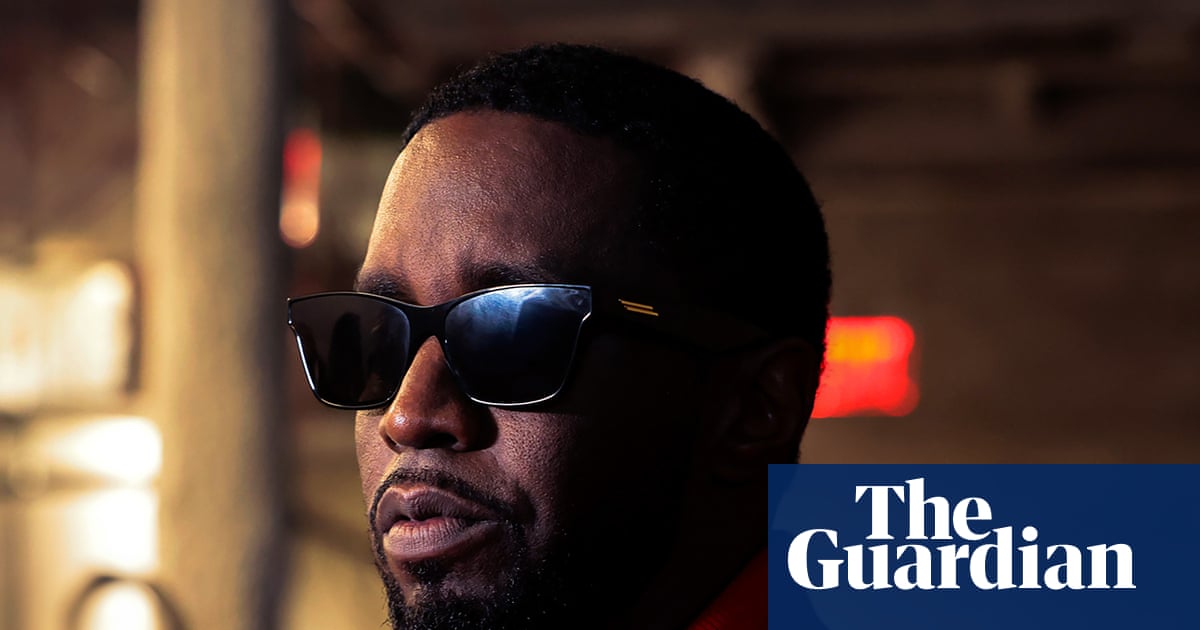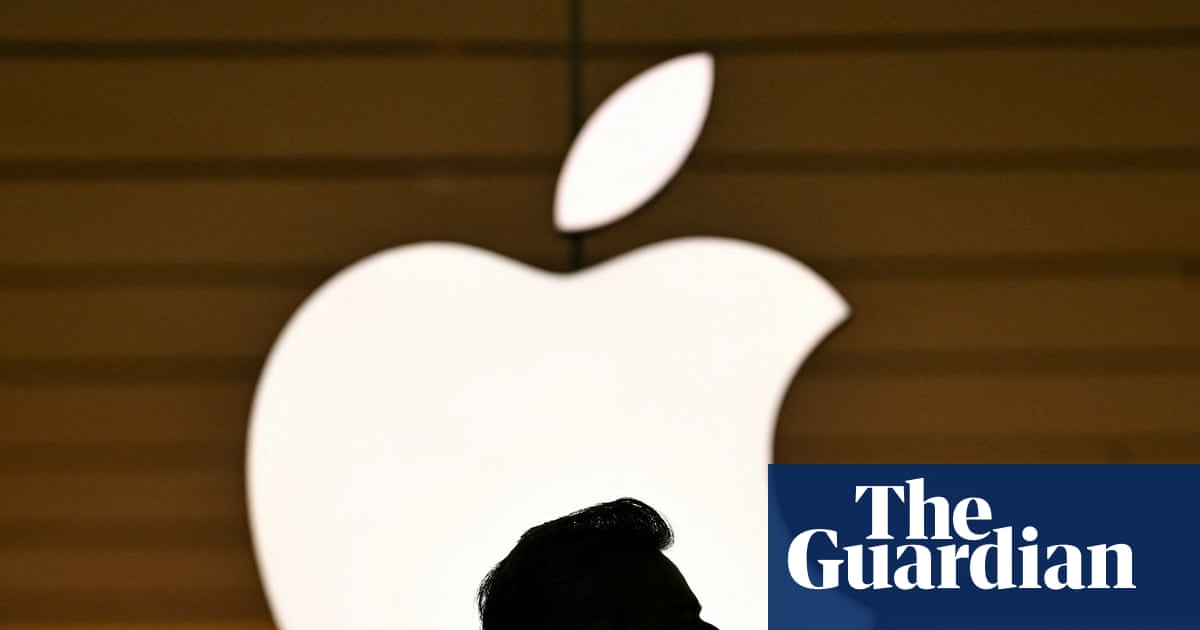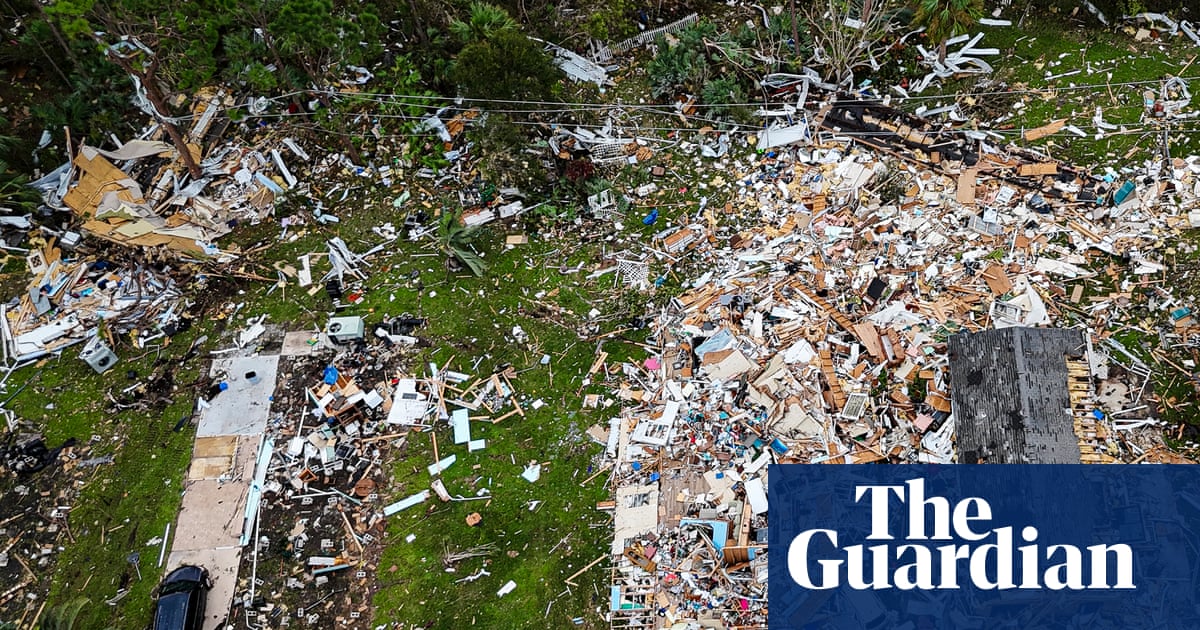It may not look as different as the redesigned Pro models this year or be as wafer thin as the new iPhone Air, but the iPhone 17 marks a big year for the standard Apple smartphone.
That’s because Apple has finally brought one of the best features of modern smartphones to its base-model flagship phone: a super-smooth 120Hz screen.
And it has done so, while also doubling the starting storage, without increasing the price. The iPhone 17 still starts at the same £799 (€949/$799/A$1,399) as its predecessor, sitting below the £999 Air and £1,099 Pro, while offering a lot of iPhone for the money.
From the outside it doesn’t look as if anything has changed since the iPhone 16, but the 17 is ever so slightly taller to squeeze in the bigger screen with slimmer borders without making the phone materially larger. The 6.3in screen now matches the super-bright display on the 17 Pro covered with significantly toughened glass to better resist scratches.
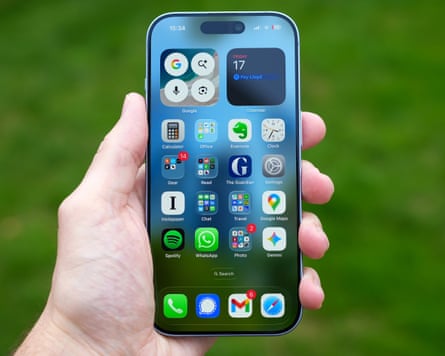
The 120Hz “Pro Motion” tech is the best bit, doubling the refresh rate of the screen to make scrolling and animations much smoother and more responsive. It has been a feature common to rival smartphones for years, but Apple has until this point reserved it for Pro models of the iPhone, MacBooks and iPads.
The 17 also has the previously Pro-only always-on display feature, which shows the time, widgets and notifications while the phone is idle. And it runs the same iOS 26 with Apple’s new glass-like interface design as the rest of the iPhone lineup. It looks a bit different and some elements have been simplified or condensed to get out of the way of the content you’re trying to see, but generally it works the same with some nice touches here and there.
Specifications
-
Screen: 6.3in Super Retina XDR (120Hz OLED) (460ppi)
-
Processor: Apple A19
-
RAM: 8GB
-
Storage: 256 or 512GB
-
Operating system: iOS 26
-
Camera: 48MP main + 48MP UW; 18MP front-facing
-
Connectivity: 5G, wifi 7, NFC, Bluetooth 6, Thread, USB-C, Satellite, UWB and GNSS
-
Water resistance: IP68 (6 metres for 30 mins)
-
Dimensions: 149.6 x 71.5 x 7.95mm
-
Weight: 177g
Rapid A19 chip and solid battery life
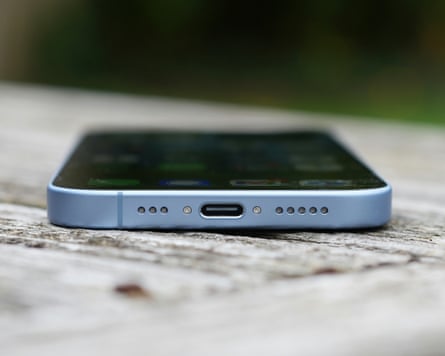
The iPhone 17 has Apple’s new A19 chip, which is only a little less powerful than the A19 Pro in the other models this year, making it one of the fastest chips in a smartphone. Apple still has a lead over Android rivals in processors, even in cheaper models.
As a result the 17 handles everything you could want to do with a phone with aplomb. Battery life is also good for a phone of this size, lasting a solid 44 hours of mixed usage across wifi and 5G between charges, actively using the screen for about six hours and with the always-on display feature turned on. That’s slightly shorter than its predecessor, but slightly longer than the similarly sized 17 Pro and a fair bit longer than the iPhone Air. Most people will need to charge the 17 every other day.
Sustainability
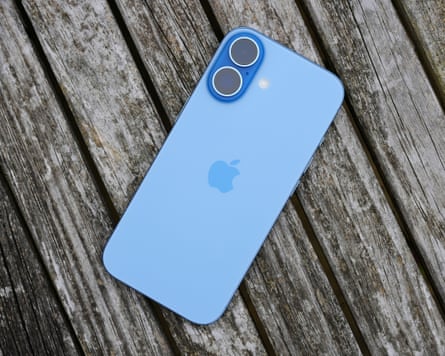
The battery will last in excess of 1,000 full-charge cycles with at least 80% of its original capacity and can be replaced for £95. Out-of-warranty screen repairs cost £349.
The phone contains more than 30% recycled material including aluminium, cobalt, copper, gold, lithium, plastic, rare earth elements, steel, tin and tungsten. The company breaks down its environmental impact in a report. Apple offers trade-in and free recycling schemes, including for non-Apple products.
Camera
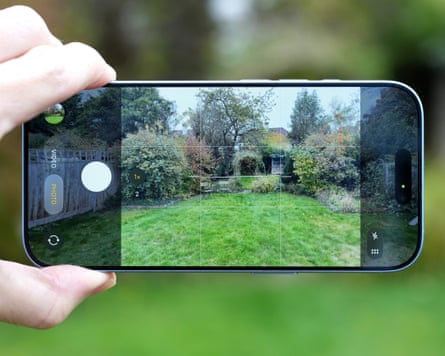
The 17 has two 48-megapixel cameras on the back – one main and one ultrawide – plus Apple’s new 18MP centre stage selfie camera, as seen on the iPhone 17 Pro and Air.
The main camera remains unchanged from the iPhone 16 and shoots great photos across a range of lighting conditions. Occasionally it can be blown out by bright lights or suffer from a bit of blur or grain in low-light conditions, but it is a reliably good point-and-shoot camera. It can perform a 2x crop zoom, which works great in good light and OK in dimmer indoor lighting. The ultrawide is an upgrade on predecessors, shooting with greater detail and range. It works particularly well for the macro mode for closeup photos.
The camera can digitally zoom up 10x, but the resulting photos lack detail and sharpness. A real camera zoom is still limited to the Pro models on an iPhone.
The new front-facing camera shoots solid selfies, which are slightly better than previous iPhones. But its party piece is the ability to automatically pan and zoom to fit everyone in for group shots, no matter which orientation you hold the phone. Shooting landscape photos while holding your phone in portrait is surprisingly useful.
The 17 has plenty of modes to play about with and shoots great video, including a dual-capture feature that records from the front and back cameras at the same time to put the photographer into the shot in a little window.
Price
The iPhone 17 starts from £799 (€949/$799/A$1,399) with 256GB of storage.
For comparison, the iPhone 16e costs £599, iPhone Air costs £999, iPhone 17 Pro costs £1,099, the iPhone 17 Pro Max costs £1,199, the Google Pixel 10 costs £799, the Samsung Galaxy S25 costs £699 and the Fairphone 6 costs £499.
Verdict
The iPhone 17 may not look all that different from last year’s model, but it is a meaningful upgrade on all the standard model iPhones that have come before.
That’s because it has key features pulled down from Apple’s pricier Pro models, including a significantly better, brighter and 120Hz-smooth screen. It’s a must-have feature that has been standard on rival phones for years. The always-on display is super handy too, while double the starting storage to 256GB and about two-day battery life is very welcome. For the first time in many years, using the iPhone 17 doesn’t feel like a significant downgrade from the Pro models.
The dual camera on the back is good, but the lack of a telephoto option keeps it from being great. The iPhone 17 still feels compact for a modern phone, and while not quite as featherlight as the iPhone Air, it isn’t exactly heavy.
Unless you need a camera zoom, the standard iPhone 17 is the one to get for Apple buyers. It’s great.
Pros: rapid, great 120Hz screen, good dual camera with macro mode, at least 256GB storage, great size, action and camera control buttons, USB-C, good battery life, long software support, Face ID.
Cons: no telephoto camera, samey design, not the thinnest, lightest or most powerful model.
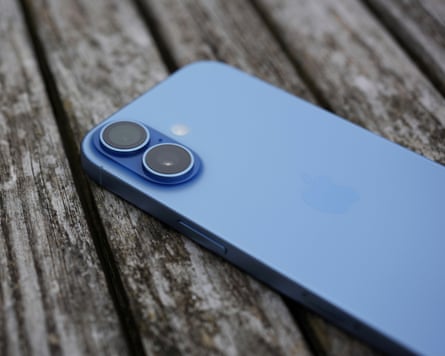

 1 month ago
28
1 month ago
28
